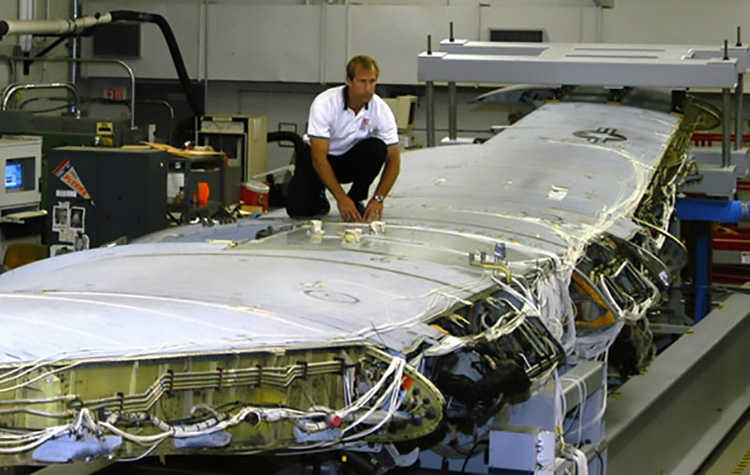When Warthogs Fly

When Warthogs Fly
In an effort to keep its A-10 fleet flying safely, the U.S. Air Force has tapped the University of Dayton Research Institute to help in its efforts to re-wing the aircraft.
With plans to improve the design and install new wings on more than 220 A-10s, the Air Force first needs to know how the plane’s current wings behave under load and stress. Typically, such load tests are performed with computer models. But because the “Warthog” – named for its ungainly appearance – was designed more than 30 years ago, no digital data existed to provide computer-generated information.
Researchers at UDRI have generated that model and are now validating their computations by performing load tests on an actual A-10 wing at a lab on campus.
“The A-10 was slated for retirement, but due to its overwhelming effectiveness and popularity with our troops, the Air Force decided to extend its life beyond 2028,” said Dan Bowman, head of UDRI’s Aerospace Mechanics division. “The Air Force recognized that the bird’s original ‘thin-skinned’ wings had cracking problems and would need to be replaced with better, ‘thick-skinned’ wings.”
To start the process, UDRI worked with two companies in Utah to create a computer-generated, three-dimensional model of the wing and double-check its accuracy. Using the new electronic model, UDRI researchers then began the process of mathematically predicting how the Warthog wing would behave when placed under the kind of loads it is likely to encounter in flight.
“We were charged with providing a validated FEM – a finite element model,” said Bill Braisted, the lead researcher on the program. “The FEM is the computer model used to predict how much a wing will bend and deflect under load and how much the individual components of the wing will be stressed. We’re validating those predictions by placing loads on an actual wing – and so far, our model has been extremely accurate.”
Using more than 240 strain gages and 24 deflection devices attached to the 60-foot wing to measure movement, the researchers have put the wing through a series of load tests and checked the live results against the model’s. “For instance, if we computed that the wing should bend a certain number of inches under a 1,000-pound load, then we’d place a 1,000-pound load on the wing in our lab to see if it would bend that number of inches.”
Braisted said he and his team are pleased with the results. “Now that we know we’ve created a model capable of accurately predicting the wing’s behavior under load, the model can be used to design a better, safer wing.”
Braisted said the model will be delivered to the Air Force and to Boeing, which has been contracted to build the new wings. The technology can also be transitioned to commercial aircraft, he added.
“This program has provided us the opportunity to develop valuable tools and technology to address aging aircraft issues, not only for the Air Force, but for commercial aircraft as well. We typically work on individual aircraft components or systems, but now that we’ve had the opportunity to perform analysis and testing on a full-scale aircraft wing, we’re looking forward to working with even larger structures.”
August 30, 2007
